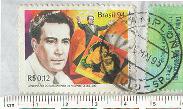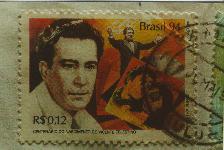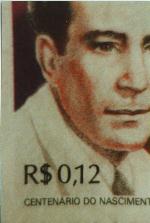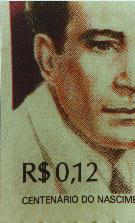-
Achromatic (double-element) close-up lenses available:
--------+---------------+---------------+---------------+
Brand | diameters | diopters | designation |
--------+---------------+---------------+---------------+
Canon | 52,58 | 4 | 250D |
Canon | 52,58,72,77 | 2 | 500D |
--------+---------------+---------------+---------------+
Minolta | 49, 55 | ?? | |
========+===============+===============+===============+
Nikon | 52 mm | ?? | 0 |
Nikon | 52 mm | ?? | 1 |
Nikon | 52 mm | ?? | 2 |
Nikon | 52 mm | 1.5 | 3T |
Nikon | 52 mm | 2.9 | 4T |
--------+---------------+---------------+---------------+
Nikon | 62 mm | 1.5 | 5T |
Nikon | 62 mm | 2.9 | 6T |
========+===============+===============+===============+
Olympus | 49 mm | ?? | |
Olympus | 55 mm | ?? | |
Olympus | 80 mm | ?? | |
--------+---------------+---------------+---------------+
Pentax | 49mm | | S25 CLOSE UP
Pentax | 49mm | | T80 CLOSE UP
Pentax | 67mm | | T132 CLOSE UP LENS
Pentax | 67mm | | T226 CLOSE UP LENS
Pentax | 67mm | | S82 CLOSE UP LENS
Pentax | 58mm | | SMC CLOSE-UP LENS S3
Pentax | 58mm | | SMC CLOSE-UP LENS S56
--------+---------------+---------------+---------------+
- A example of what can be done.
These pictures were taken with a
80-200/4.5 zoom and a double element close-up lens (~6 diopters). This
lens was originally one of the front lenses of a binocular.
I used this stamp for testing the lens. This is a direct scan of the envelope.
 JPEG 366x219 (22435 bytes)
JPEG 366x219 (22435 bytes)
This photo was taken at the 80mm focal lenght. Exposure time: 1",
aperture: f/16:
 JPEG 448x300 (26614 bytes)
bigger: 896x602 (84839 bytes)
JPEG 448x300 (26614 bytes)
bigger: 896x602 (84839 bytes)
The lenght of the area photographed is aproximately 50mm,
so the macro ratio is 50/35 = 1.43:1.
This photo was taken at the 200mm focal lenght. Exposure time: 1/8",
aperture: f/6.7:
 JPEG 300x446 (17783 bytes)
bigger JPEG 270x446 (52602 bytes)
This image is very soft, probably due to spheric aberration on the
close-up lens. This softness was visible on the viewfinder.
JPEG 300x446 (17783 bytes)
bigger JPEG 270x446 (52602 bytes)
This image is very soft, probably due to spheric aberration on the
close-up lens. This softness was visible on the viewfinder.
At this setting, the width of the area covered is a little less
than 1.5cm, so the ratio is 15/24 ~= 2:3. We got better than 1:1, cheaply.
Also taken at the 200mm focal lenght, but exposure time: 4",
aperture: f/32:
 bigger
At f/32 diffraction is supposed to reduce sharpness, but that is not
visible on the image.
bigger
At f/32 diffraction is supposed to reduce sharpness, but that is not
visible on the image.
Details of the 2 images:
First:
 second:
second:

We can see some colour dispersion, and the printing pattern (only
in the second).
-
Philip Greenspun's experience with the
Raynox MicroExplorer
When I get the time, I will integrate the info below in the text above,
but for now is on this format.
In article <4ds8d5$ech@agate.berkeley.edu> you wrote:
> Bob Neuman in <4dkjdd$po0@newsstand.cit.cornell.edu>:
> - There is some justification in getting a good
> - achromat for the close-up lens (Nikkor or Canon)
> Hurm.. I'm a Nikon user, I never thought of checking out Canon for
> close-up lenses. B&H says $CALL for all diameters ... What diopter range
An older (april 1995) catalogue had these prices:
55mm $45, 58mm $70
> does Canon have in achomats? And while I'm asking, is there a practical
> limit to the focal-length when using even good close-up lenses?
The limit is probably more on the diameter of the lens you are
really using. Even an achromat still has spherical aberration. For
the same aperture (f^16, for instance) a 300 mm will be using a
larger diameter (~2cm) of the lens than a 80 mm (~0.5cm).
So, it will suffer more from spherical abberration.
I am interested in achromats close-up lens. In fact I am
thinking of compiling a little FAQ, if I can find the time (you
can go to the http://www.mat.uc.pt/~rps/photos/macro/, but it is
not ready, just some examples).
Could you mail me any info you have on the Nikons and Canons close-up
lenses ? What I am interested is in diameters/diopters available
(with designations).
From beorn@alumni.EECS.Berkeley.EDU Fri Mar 1 23:49:52 1996
Received: (from beorn@localhost) by alumni.EECS.Berkeley.EDU (8.7/StupidYak 1.0) id OAA05083 for rps@mat.uc.pt; Fri, 1 Mar 1996 14:49:20 -0800
Date: Fri, 1 Mar 1996 14:49:20 -0800
From: Beorn Johnson
Message-Id: <199603012249.OAA05083@alumni.EECS.Berkeley.EDU>
To: rps@mat.uc.pt
Subject: Close-up photography
Status: OR
Hi,
I have a little info for you and your close-up photo web page.
Cannon close-up lenses are designated by the close-focus
range in mm, i.e. 500 -> 500mm -> 1/.5 D -> 2 diopters. They have close
up lenses in 4 diopters (250 and 250D, where "D" is the achromat).
Inquiring at B&H, the 500T is discontinued in favor of the 500D (I was
inquiring specifically about the 77mm close-up to use on my Nikon
80-200/f2.8, but I believe this is generally true). I called Cannon
and they fellow said that the 500T was specifically designed for
a particular set of lenses (he mentioned the 80-200/f4), but, again, it's
now replaced by the 500D. They recommend the 500D for lengths from 70-300mm.
The 250D is only available in 52mm and 58mm filter diameters.
The suggested price on the 500D for 77mm is US$205, but B&H sells
for US$139 (I recall).
You might consider listed non-achromats on your page just as a warning.
I bought a B&W (brand) 5 Diopter close-up because I thought a company
with a reputation of B&W would only sell achromats, but it wasn't.
By the way, I really liked your stamp examples on your web page.
That's all for now!
Beorn Johnson
(beorn@alumni.eecs.berkeley.edu)
To: Pentax Discuss
Subject: Re: Close ups with extension tubes
Reply-To: rps@mat.uc.pt
X-Newsreader: TIN [UNIX 1.3 950824BETA PL0]
GerardB@apb.agric.wa.gov.au (Bendotti, Gerard) wrote:
> I have a Pentax Z20 and am thinking of trying some close focus work. To do
> this I was wondering if extension tubes work OK with a 35-135mm AF lens and
Which lens is that ? It is not Pentax, is it ? (Maybe a F series ?)
> what sort of limitations one might expect.
I have read in the net that zooms do not work well with extension tubes.
Apparentely with an extension tube mounted in a zoom you will need to
zoom in order to focus instead of using the focusing ring.
I have never tried it.
> Or is is better to use a prime lens.
Yes. You would probably do well in buying a 50 mm f/1.7. Apart from
using it with the extension tubes it is also a great lens for available
light photography.
Considering that the Pentax 50mm f/1.4 is not much more expensive than
the f/1.7 (+50%, other brands have differences like 3x, this is because
Pentax has the cheapest 50 mm f/1.4 but also the most expensive 50 mm
f/1.7), you might also consider that lens. Usually 50 mm f/1.4 are not
recommended for macro work, since they usually have some more distorsion
and field curvature than 50mm f/1.7. If you want I may check some magazine
tests, although they don't measure field curvature.
Or if you want a really cheap solution, buy the manual focus 50mm f/2
usually sold with the K1000 ($60 at B&H ?).
> I imagine it would be best to use the mid range focal length, but am
> not clear on what happens to lighting, for instance is it similar to
> teleconvertors where a x2 convertor doubles focal length and takes 2f stops.
It is similar. You lose 2 stops at 1:1 ratio compared with the same
lens at infinity. The reason is simple: you are not increasing the
aperture, but you are increasing the distance from the lens to the film
(double at 1:1). As the f stop is that distance divided by the aperture
you get an effective aperture which is twice the number, that is, 2
stops slower.
Example:
To get to 1:1 with a 50 mm lens you will need 100mm distance
between the lens and the film. An aperture which is f/8 at
infinity has 50/8 = 6.25 mm. At 1:1 it will be 100/6.25 = 16.
BTW, you see in this example that you need 50mm extension to get to 1:1
from a 50mm lens. A 50mm lens that focus to 0.4m has a built-in extension
of approximately 7mm, so you would need a tube with 43mm or longer.
You can find these formulas, and depth of field, etc... in the regular
postings by David Jacobson (lens FAQ and Tutorial) in
rec.photo.moderated, rec.answers, news.answers.
Other interesting option is to use close-up lenses. They are very easy
to use, since they don't affect any automatic operations and they don't
reduce the light getting to the film. Pentax makes such lenses, but they
are probably hard to find and I have not been able to get info about them.
Luckly Canon also uses the 58 mm filter diameter (and also 52 mm, in
case your lens use that size). They have 2 interesting models, the 250D
and the 500D. The D is important, since it means that the lens is achromat
(double-element) to reduce chromatic aberration (colour fringing).
The number means the focal lenght of the lens. 500 is 500mm, that is 2
diopters. 250 is 250mm, that is 4 diopters. With the 250D and your zoom
at the 135mm setting and focused at infinity you would get to 250/135 =
1.85:1 . Using the focusing ring of the zoom you would get even larger
magnification ratios.
The relevant formulas are:
1 - when using a close-up lens of focal lenght X, that is your far
focusing limit. So with the 250D you can focus at most on something
250mm away. It is not possible to focus in anything more distant.
This distance is measured from the close-up lens center, not from the
film plane.
2 - the conversion from diopters to focal lenght and vice-versa is:
f = 1/D <=> D = 1/f (f = focal length in meters, D = diopters)
3 - If you use 2 close-up lenses the diopters add up. For instance
using both the the 250D and the 500D you would get a 6 diopter lens
(1/0.25 + 1/0.5 = 4 + 2 = 6), that is a 166mm lens.
4 - If you have a lens that focuses as close as d1, and you use a
close-up lens of D diopters, you will be able to focus at distance d2
deduced from the equation: 1/d2 = D + 1/d1 <=> d2 = 1 / (D + 1/d1).
Note that both d1 and d2 are measured from the front of the lens, not
from the film plane (which is the distance written on the focusing scale).
My home page has some info about close-up lenses including examples
of the results I got. It is still rather incomplete, but now I will
integrate what I have written here in the page.
Finally, note that if you aren't doing reproduction work (photographs
of flat subjects) almost anything will give good results. That is
because, in macro photography of 3-D objects you will never have enough
depth-of-field (see again the FAQ for the formulas).
For instance if you are working at 1:1 with an aperture setting of f/8,
your depth of field for each side of the focus plane will be:
frontdepth = reardepth = Ne*c/M^2
Ne (effectiver aperture) is 16
c (circle of confusion) is usually = 0.03 mm
M (magnification) is 1
so
frontdepth = reardepth = 16 * 0.03mm / 1 = 0.48 mm
As you can see depth of field in macro is very small, so you will have
to use small/very small apertures. At small apertures most aberrations
are reduced, so it is easy to get good results from almost anything.
At very small apertures even the best optic in the world will have
reduced performance due to difraction (you can't change the laws of nature).
Field curvature is not a problem with 3-D subjects, since the borders
will be out of focus anyway.
I hope that this has not been too boring.
--
http://www.mat.uc.pt/~rps/photos/ an ex-tiffoso until the end of 1997
.pt is Portugal| `Whom the gods love die young'-Menander (342-292 BC)
Europe | Villeneuve 50-82, Toivonen 56-86, Senna 60-94
From rps Tue Mar 26 14:48:46 1996
To: Russell.Bentley@UK.Sun.COM
Subject: Re: Advice please
Status: OR
To: Russell.Bentley@UK.Sun.COM
Subject: Re: Advice please
Newsgroups: rec.photo.equipment.misc
Reply-To: rps@mat.uc.pt
X-Newsreader: TIN [UNIX 1.3 950824BETA PL0]
In article <4its52$bom@engnews2.Eng.Sun.COM> you wrote:
> I need to take some extreme close-up pictures to accompany an article,
> but I don't yet have the equipment I need.
> The subjects will be small fishing flies, down to (say) an eighth of an
> inch across,
% units
you have: in/8
you want: mm
* 3.175000e+00
/ 3.149606e-01
> and the subject needs to fill three-quarters of a 35mm frame.
3/4 * 36 = 27mm
That will be difficult. You want a 8:1 ratio (27 / 3.175) !
> I have a Minolta Dynax 7000i (aka Maxxum in the US/Asia) and three
> Minolta zoom lenses - 35-70mm, 70-210mm and 100-300mm. Yes, I have a
> tripod and a cable shutter release:-)
> My question is what do I need to take these pictures ? I know I could
> go the expensive route and buy a Minolta or Sigma macro lens, but as I
Normal macro lenses only go to 1:1.
> won't need to do this very often is there a cheaper way ?
Raynox Micro explorer is just what you need.
Using your 210 mm zoom or the 300 mm and the strongest lens of the set,
you can get to a very high magnification ratio (8:1 ? I think this is
the number I read. I can check in the magazine if you want).
In my homepage there is a text about macro photography (incomplete due
to lack of time). You will find there a link to a page about the Raynox.
The main problem that the author of the report on the Raynox found was
vignetting. But the photos I saw on an article published in a magazine
didn't have that problem. I suspect that the lens he used has a too large
front element to work well with the Raynox. The lenses you have should
be more adapted.
Close-up lenses have the advantage (compared with extension tubes,
bellows or reversing rings) to be much easier to use (all automatisms
still work).
Another possibility would be for you to buy a male-male filter ring and
use that to reverse your short lens in front of your long lens. Since
the ratio of the focal lenghts is 300/35 = 8.5, you could get to a 10:1
ratio very cheaply. But since your short lens is a zoom I am not sure
if this will work well.
--
http://www.mat.uc.pt/~rps/photos/ an ex-tiffoso until the end of 1997
.pt is Portugal| `Whom the gods love die young'-Menander (342-292 BC)
Europe | Villeneuve 50-82, Toivonen 56-86, Senna 60-94
From rs11@st-andrews.ac.uk Fri Apr 26 15:59:40 1996
Received: (from rs11@localhost) by pasta.st-andrews.ac.uk (8.6.12/8.6.12) id PAA17724; Fri, 26 Apr 1996 15:59:10 +0100
Date: Fri, 26 Apr 1996 15:59:09 +0100 (BST)
From: Ralf Stubner
X-Sender: rs11@pasta
To: Rui Pedro Mendes Salgueiro
Subject: close-up lenses
Message-Id:
Mime-Version: 1.0
Content-Type: TEXT/PLAIN; charset=US-ASCII
Status: OR
hi!
just some info i found in the 'pentax me super book of photography' about
pentax close-up lenses. you might want to include it in the table on your
homepage.
type dioptres size(mm)
s25 3 49
s40 2 49
t80 1 49
t95 0.9 52
t160 0.6 49
t183 0.5 52
no idea if they are achromats or not.
concerning the minolta achromats, as far as i remember they are labled
O,I and II having about 1,2 and 3 dioptres. but i don't recall the exact
numbers.
by
ralf
From: "joe b."
Newsgroups: rec.photo.equipment.35mm
Subject: Re: Close-up Photography book?
Date: Fri, 8 Nov 1996 07:20:10 +0000
Organization: somewhere quiet away from all this
Lines: 8
Distribution: world
Message-ID:
References: <32825589.167EB0E7@uci.edu>
NNTP-Posting-Host: gw5-015.pool.dircon.co.uk
Mime-Version: 1.0
X-Newsreader: Turnpike Version 3.00 <0T29+T732rpvShP7ctquUchw5l>
In article <32825589.167EB0E7@uci.edu>, Ray Price
writes
>Is there a 'definitive' book on closeup photography?
Well, John Shaw's rather spectacular "Close-Ups in Nature" would
qualify.
--
joe b.
 JPEG 366x219 (22435 bytes)
JPEG 366x219 (22435 bytes)
 JPEG 448x300 (26614 bytes)
bigger: 896x602 (84839 bytes)
JPEG 448x300 (26614 bytes)
bigger: 896x602 (84839 bytes)
 JPEG 300x446 (17783 bytes)
bigger JPEG 270x446 (52602 bytes)
This image is very soft, probably due to spheric aberration on the
close-up lens. This softness was visible on the viewfinder.
JPEG 300x446 (17783 bytes)
bigger JPEG 270x446 (52602 bytes)
This image is very soft, probably due to spheric aberration on the
close-up lens. This softness was visible on the viewfinder.
 bigger
At f/32 diffraction is supposed to reduce sharpness, but that is not
visible on the image.
bigger
At f/32 diffraction is supposed to reduce sharpness, but that is not
visible on the image.
 second:
second:
